July Featured Project | MDS-Rely Uses Machine Learning to Design and Create EMI Shielding
July 18, 2022 | By Jenna Ross and Ylan Phan
Electromagnetic interference shielding or EMI shielding is required to reduce coupling of electronic components to radiation from surroundings, which could interfere with functionality. EMI shielding is also important to protect humans from health hazards related to exposure to electromagnetic waves, which is increasingly being regulated through new laws and guidelines. EMI shielding may also provide for security to protect sensitive information or ensure that electronic systems can withstand electromagnetic pulse weapons or attacks that could disable electronic systems.
Faraday cages or metal sheets are traditionally used for EMI shielding. However, Faraday cages or metal sheets are thick, heavy, and rigid and unsuitable for flexible optoelectronics and e-textiles. Furthermore, they are manufactured by traditional subtractive manufacturing methods such as die cutting, extrusion, or molding, where the cost of manufacturing is very high. Current EMI shields cannot be created on soft and stretchable substrates or 3D objects with arbitrary shapes and surface textures with high performance and mechanical robustness.
The team is coating Electroninks’ reactive silver inks a variety of flexible substrates such as PET and fabric for high performance EMI shielding
Professors Paul Leu, Roger French, and Satish Iyengar’s project, “Machine Learning of Printed Metal Films for EMI Shielding”, focuses on new printed metal ink approaches for creating EMI shielding. The metal inks are being provided by MDS-Rely member, Electroninks, which produces high performance reactive inks that may be cured at low temperatures under 100 ℃ and yield an industry-best 30 to 90% of bulk conductivity. This allows the inks to be integrated into a variety of complex substrates such as plastics and textiles through various printing and coating approaches.
Lead PhD graduate student, Mingxuan Li
The team is also performing simulations on various types of EMI shielding designs.
“We use machine learning to quickly optimize designs for high shielding efficiency. We are creating flexible EMI shielding on plastics and textiles, which could be useful for applications such as wearable electronics or e-textiles.”
-Mingxuan Li, Lead PhD graduate student
The coated silver can be used to up the substrate, which could be used for heat management in devices or for personal comfort in clothing.
The high conductivity of the reactive inks also enables the printed metal to be used for heating at low voltages. This may be utilized for flexible electronics, smart medical devices, and wearable heaters.
Long-term, the team would like to print EMI shielding directly on chips and develop image machine learning methods to predict the performance of the printed EMI shields.
